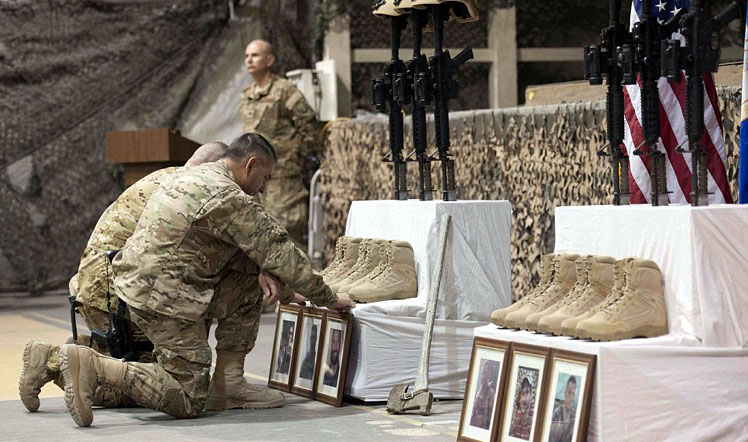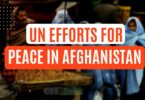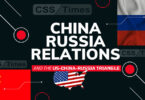The autonomy of US failure in Afghanistan
By: Durdana NajamWill Afghanistan savour peace? The three-day truce between the insurgents and the Afghan security agencies, on the occasion of Eid, has been celebrated as proof that the estrangement between the Afghans has the potential to meltdown. However easy the meltdown of estrangement may seem, the reality is that for the Taliban, and all those fighting for an Afghanistan free from the clutches of the foreign force, the road to peace passes through tough terrain. A passage the US and its partner, both within and outside Afghanistan, are loath to travel. In retrospect, Afghanistan has been made a difficult country not only because the war against terrorism was a wrong attempt to ouster the Taliban, but also because the US policies after the invasion went terribly wrong. The US has pursued its vested interest rather than the interest of Afghanistan or the region. Below is the brief anatomy of what went wrong in Afghanistan and how.
1. The distraction of US interest
The US invaded Afghanistan on the assumption that it posed an existential threat to International security. The offshoot of this assumption was that if the west did not intervene the mad mullah would get hold of the nukes in Pakistan and destroy the world. None of the assumptions were true, and we saw that, as soon as, the Al-Qaeda was pushed out and the Taliban government was toppled Afghanistan became just one of those 20 countries that should have concerned the west. It so happened because the US neither had the power nor the knowledge or legitimacy to transform Afghanistan. The least the US could have done to justify its presence in the region was to maintain a light military presence and generous developmental projects. The matter was made worse when the Iraq war was started, and Afghanistan was left with the CIA that drowned the country in money to produce more thugs.
2. Marginalizing the Pashtuns
Three blunders in the US policy kit turned Afghanistan into an international terrorism hub with the repercussion of a destabilized region. The first blunder was made when after defeating the Soviet Union, with the help of Pakistan and Afghan Mujahedeen, the US abandon Afghanistan and distanced itself from Pakistan. To further complicate the situation, the US began cultivating its relations with India. This swapping of allies did not come alone; multiple sanctions were slapped on Pakistan.
The second blunder was the US refusal to accept the Taliban once it came into power. Even Pakistan was reprimanded by then US President Bill Clinton for dealing with the Taliban.
The third blunder was the failure of the US to convert its military victory in Afghanistan into a political victory. It forged a government that lacked widespread support. The government of Northern Alliance—-a composition of ethnic minorities—–lacked the legitimacy to influence the Pashtun. The flawed assumption that all Pashtuns were Taliban gave the US a thin margin to work on a real peace.
3. Walking out on Pakistan for India
Pakistan has been blamed for supporting the Taliban. From providing sanctuaries to giving arms and logistics, the blame had framed Pakistan as one of the untrustworthy allies of the US in the war against terrorism. In perspective, Pakistan was forced to support the legitimate stakeholders in Afghanistan, because of the US support to India through nuclear deals and by encouraging its involvement in Afghanistan’s security decision. The sense of encirclement by its foe was not something that Pakistan or for that matter any country would have allowed gone unnoticed. Just like the US was using the realist theory to neutralize its enemies in Afghanistan, Pakistan too followed the same course.
4 Ignoring regional stakeholders
The US policymakers failed to develop an effective regional strategy that involved Afghanistan’s neighbours. The Bonn Conference in 2001 that provided for a framework of corporation and collaboration among the regional stakeholders such as India, Russia, Pakistan, and Iran, for a way forward in Afghanistan, reduced into a security competition, because of lack of follow-up and the slackening of US interest in Afghanistan. Moreover, instead of co-opting the Taliban leaders, the US resorted to imprisoning them at the Bagram Airfield or Guantánamo Bay. It was insane to shrink political space for a faction that represented a significant population segment. This diplomatic mistake led to the escape of even those Taliban who wanted reconciliation with the Afghan government.
5 Failure to develop a political strategy
The US made a strategic mistake thinking that military force was all that Afghanistan needed to put the state back in order. It was not to be. The malady compounded first with the turning of back on the Taliban, then with the abolishment of the Afghan monarchy and later by giving Afghanistan an overly centralized constitution, and a system of a government dependent on warlords and feudal who held their population in fear and not respect. The counterinsurgency strategy, which relied on the diplomatic surge for its success, failed in its essence. There were talks after talks in the forms of conferences, bilateral or multilateral summits, but in the absence of any credible vision of a political settlement in Afghanistan, all these talking have gone wasted so far.
6. Handing Afghanistan to criminals
The US is accused of turning in Afghanistan to the very forces the former had come to combat after 9/11: the extremists. Today, the mother of all extremist organizations, the ISIS, is operational with full force in Afghanistan. For the last many months ISIS has claimed most of the terrorist attacks in Afghanistan. The US has had a practice of supporting any leader, irrespective of their credentials, as long as it targeted the Taliban. The inclusion of the blood-drenched warlords—-the very forces against which the Taliban had come to power—-in the governance structure gave rise to insurmountable corruption.
Had the US not supported the power brokers and did not rely only on Karzai as a synonym to stability in Afghanistan; peace would have found its way in the country.
These are just a few highlights of the US policy failure in Afghanistan. Under the surface, the anomalies are thick and dense. There is a big question mark over the US intention to bring peace in Afghanistan. The three-day truce is a glimpse of hope, only, if the US returns Afghanistan to its people, conceding that the superpower has failed.
The writer is a freelance journalist based in Lahore.
Article Source: Daily The Nation Lahore







